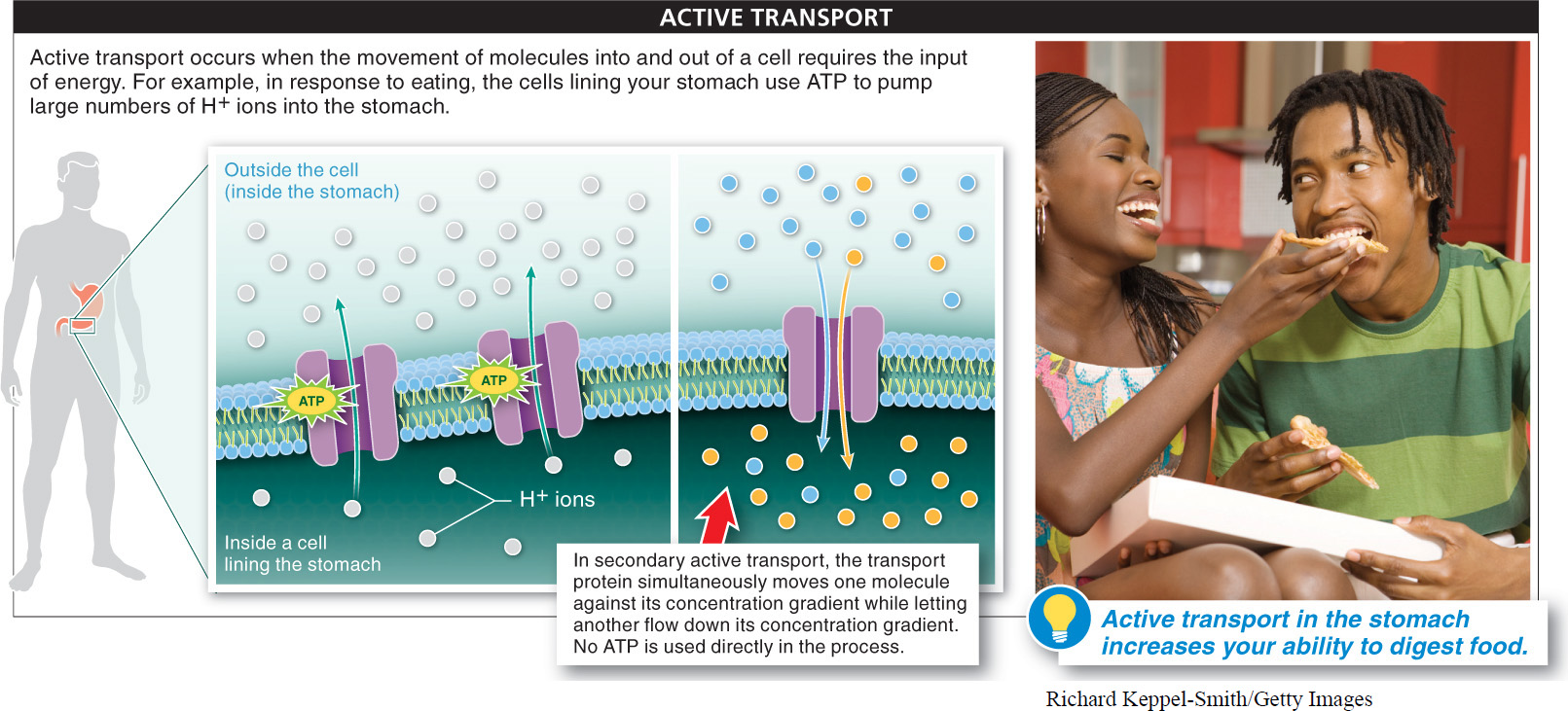Molecules can’t always move spontaneously and effortlessly in and out of cells. Sometimes their transport needs energy, in which case the process is called active transport. Such energy expenditures may be necessary if the molecules or ions to be moved are being moved against their concentration gradient. In all active transport, proteins embedded in the membrane act like motorized revolving doors, pushing molecules across cell membranes regardless of the concentration of those molecules on either side of the membrane. The two distinct types of active transport, primary and secondary, differ only in the source of the fuel that keeps the revolving doors spinning.
The process of digestion provides an example of primary active transport, the type of active transport that occurs when energy from ATP is used to fuel the transport of molecules. To help break down food into more digestible bits, the cells lining your stomach create an acidic environment by pumping large numbers of H+ ions (also called protons) into the stomach contents, against their concentration gradient (FIGURE 3-21). As a result, H+ ions are more numerous in the stomach contents than inside the cells lining the stomach. All of this H+ pumping increases your ability to digest the food but comes at a great energetic cost—

Many transport proteins use an indirect method of fueling their activities rather than using energy released directly from ATP. In the process of secondary active transport, the transport protein simultaneously moves one molecule against its concentration gradient while letting another flow down its concentration gradient. Although no ATP is used directly in this process, at some other time and in some other location, energy from ATP was used to pump one of the molecules involved in the secondary transport process against its concentration gradient. The process is a bit like using energy to pump water up to the top of a high water tower. Later, the water can be allowed to run out of the tower over a water wheel, which can, in turn, power a process such as grinding wheat into flour. Our bodies frequently use the energy from one reaction that occurs spontaneously to fuel another reaction that requires energy.
TAKE-HOME MESSAGE 3.10
In active transport, movement of molecules across a membrane requires energy. Active transport is necessary if the molecules to be moved are very large or if they are being moved against their concentration gradient. Proteins embedded in the plasma membrane act like motorized revolving doors to actively transport (pump) the molecules.
Why does it sometimes cost energy to move molecules across a membrane?
Active transport, in which energy is spent to move molecules across a membrane, is necessary when the molecules are large and when the molecules are being moved up (against) their concentration gradient.
107